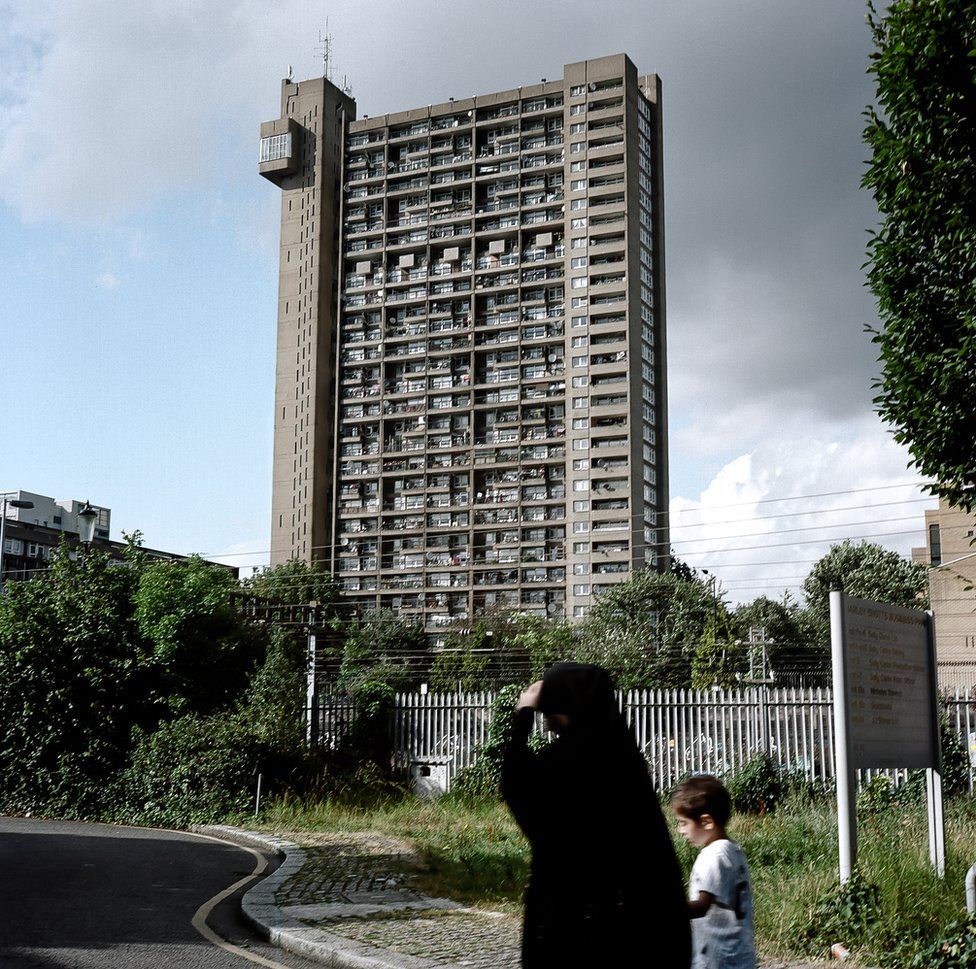Notting Hill's famous Trellick Tower
- Published

Trellick Tower, a Grade II*-listed block of council flats, sits at the end of Golborne Road in London's Notting Hill.
It was completed in 1972 by Hungarian-born architect Erno Goldfinger, the same year work commenced on the neighbouring Grenfell Tower. The Brutalist style which used exposed concrete and was popular in the 60 and 70s, has since fallen out of favour.
However, unlike Grenfell, Trellick Tower's listed status protects it from regeneration projects. The tower remains predominantly occupied by council flat tenants.
For the past year, photographer Nicola Muirhead has been photographing and interviewing residents about life in Trellick Tower.
Edith, resident for 33 years
Edith is one of the oldest residents in Trellick Tower. She immigrated to London from Jamaica and soon became a nurse .
"London was like drinking a glass of water for the first time," she says.
"When I came here, I met a lot of friends from the islands. I met them inside Trellick Tower."
Now in her 90s, Edith lives alone in her apartment and is only visited by community care nurses.
Damani, resident for 22 years
Damani enjoys living in the tower, but believes that the rent is too high because of the area.
"This road, Golborne Road," he says, "I walked up it yesterday and I spotted at least 10 restaurants I can't afford to eat in, so what are they doing on my road? This isn't a wealthy place."
Sue, resident for 33 years
"I originally lived in Hackney before I moved over here," says Sue. "When we got off the train, it was like, 'Oh my gosh, what's this!'."
When she first lived here, Sue remembers that there was no running water and residents were forced to use a standpipe outside the building.
"I suppose at the time, people loved it or hated it.
"And they started calling it Brutalist and I've only just learnt what that means."
Fatouma, resident for 30 years
In 1974, when she was 16 years old, Fatouma moved to London from Morocco.
She grew up on St Ervans Road, a street opposite the tower, and moved into it with her son in 1986, after her husband relocated to America.
The tower was very different then, and Fatouma remembers often returning to her parents' house because she was scared as a single parent.
"We didn't have any security guards," she says, "and everything that you can imagine was in this building, including lots of drugs."
However, the days of having to be escorted into the building by her family have long passed.
"Now I love it. It is much, much better now."
Cameron and Adia, residents for 30 and 12 years respectively
Cameron noticed that during the late 80s and early 90s, around the time the tower gained its listed status, people began to buy more apartments privately.
"It happened suddenly and, for me, the thing that disturbed me the most is that these people had no idea about the community," he says.
"It just didn't exist in their minds at all. It was just this profit thing."
Molly, resident for 19 years
Nineteen-year-old Molly has lived in Trellick Tower her whole life, so long that she's got used to life on one of its high floors.
One particular benefit for her is that "in the winter I can sleep with my curtains open and I don't have to be paranoid about people looking in".
She is very proud of where she lives.
"I always see people looking at it and I'm kind of jealous," she says. "I want to see Trellick Tower for the first time, to feel the impact of it, to feel the shadow of it.
"But hey, I grew up here."
Photographs by Nicola Muirhead.